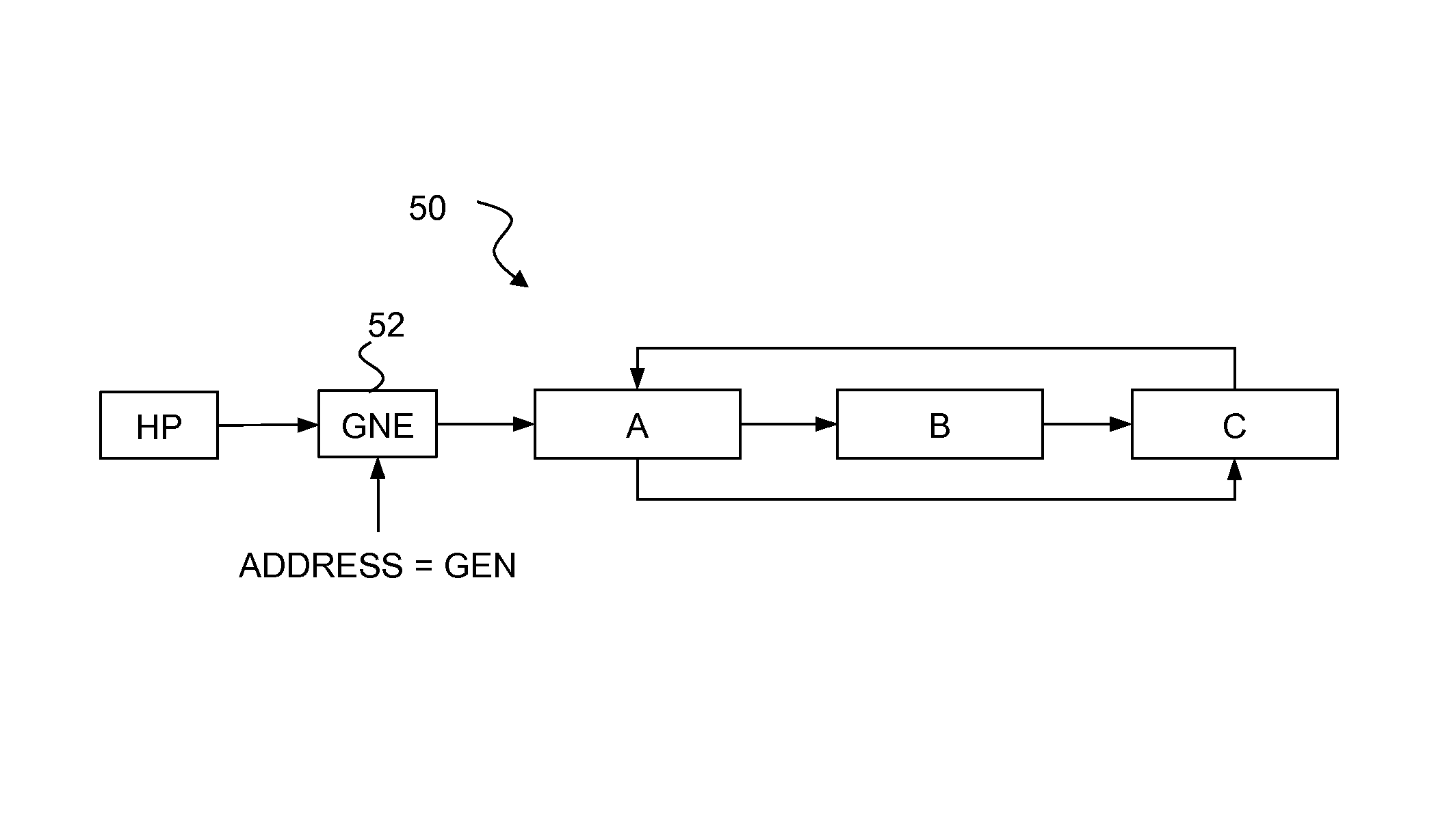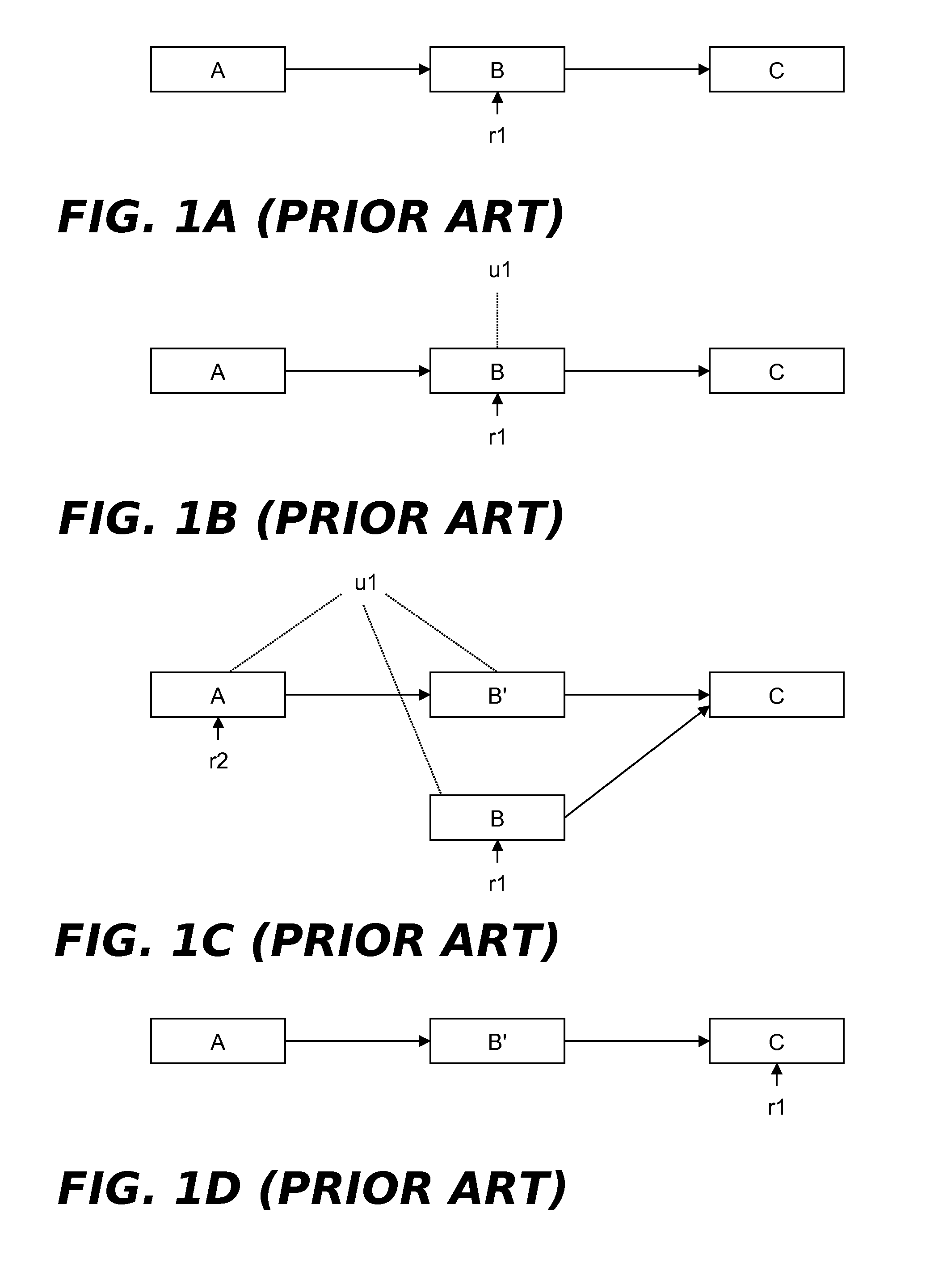Performance of RCU-based searches and updates of cyclic data structures
a technology of cyclic data structure and rcu-based search, which is applied in the field of computer systems and methods, can solve the problems of inefficient, high cost, and high cost of read-side lock acquisition, and achieve the effect of improving the performance of rcu-based searches
- Summary
- Abstract
- Description
- Claims
- Application Information
AI Technical Summary
Benefits of technology
Problems solved by technology
Method used
Image
Examples
embodiment 1
Description of Embodiment 1
[0060]Embodiment 1 may be understood by reference to FIG. 8, which illustrates a modified version 50 of the cyclic graph 20 shown in FIG. 5. Instead of the header pointer HP directly referencing element A in FIG. 8, the header pointer references a generation number element (GNE) 52, which, in turn, references element A. The generation number element 52 can be implemented as a minimal data element, namely a pointer variable that references element A. As mentioned above, the address of the generation number element 52 serves as the current global generation number, which means that a new generation number element will be generated for each update to the global generation number, with an address value that is higher than the immediately preceding generation number element. One way to accomplish this is to have the generation number elements 52 allocated from a contiguous array, such as the array 54 shown in FIG. 9. One challenge is the case where there are mu...
embodiment 2
Description of Embodiment 2
[0061]Embodiment 2 may be understood by reference to FIG. 10, which illustrates a modified version 60 of the cyclic graph 20 shown in FIG. 5. Instead of the header pointer HP directly referencing element A in FIG. 10, the header pointer again references a generation number element (GNE) 62, which, in turn, references element A. If memory space permits (which it usually will, even in an embedded system), the generation number element 62 can be implemented as a small data structure that explicitly stores the current global generation number in a generation number (GEN) data field 64, and also stores a pointer variable that references element A.
[0062]It should be noted that dependency ordering does not guarantee that the global generation number will be accessed before the reader begins traversing the remainder of the data element group. The dependency ordering applies only between the header pointer fetch and the access to the global generation number elemen...
embodiment 3
Description of Embodiment 3
[0064]Embodiment 3 may be understood by reference to FIG. 11, which illustrates a modified version 70 of the cyclic graph 20 shown in FIG. 5. Instead of placing a generation number element between the header pointer HP and element A in FIG. 10, element A serves as a generation number element 72, and stores the current global generation number 74 therein. The header pointer directly references element A. Embodiment 3 dispenses with the need for a separate generation number element, and therefore avoids the need for an extra cache line, as required by Embodiments 1 and 2.
Pointer Forwarding Entities
[0065]Turning now to FIG. 12, the use of pointer forwarding entities is presented in the context of a circular linked list 80. The linked list 80 comprises three data elements A, B and C, in that order. There is also a global list head pointer forwarding entity P(h) that points to data element A, and three additional pointer forwarding entities P(A), P(B) and P(C) ...
PUM
 Login to View More
Login to View More Abstract
Description
Claims
Application Information
 Login to View More
Login to View More - R&D
- Intellectual Property
- Life Sciences
- Materials
- Tech Scout
- Unparalleled Data Quality
- Higher Quality Content
- 60% Fewer Hallucinations
Browse by: Latest US Patents, China's latest patents, Technical Efficacy Thesaurus, Application Domain, Technology Topic, Popular Technical Reports.
© 2025 PatSnap. All rights reserved.Legal|Privacy policy|Modern Slavery Act Transparency Statement|Sitemap|About US| Contact US: help@patsnap.com



